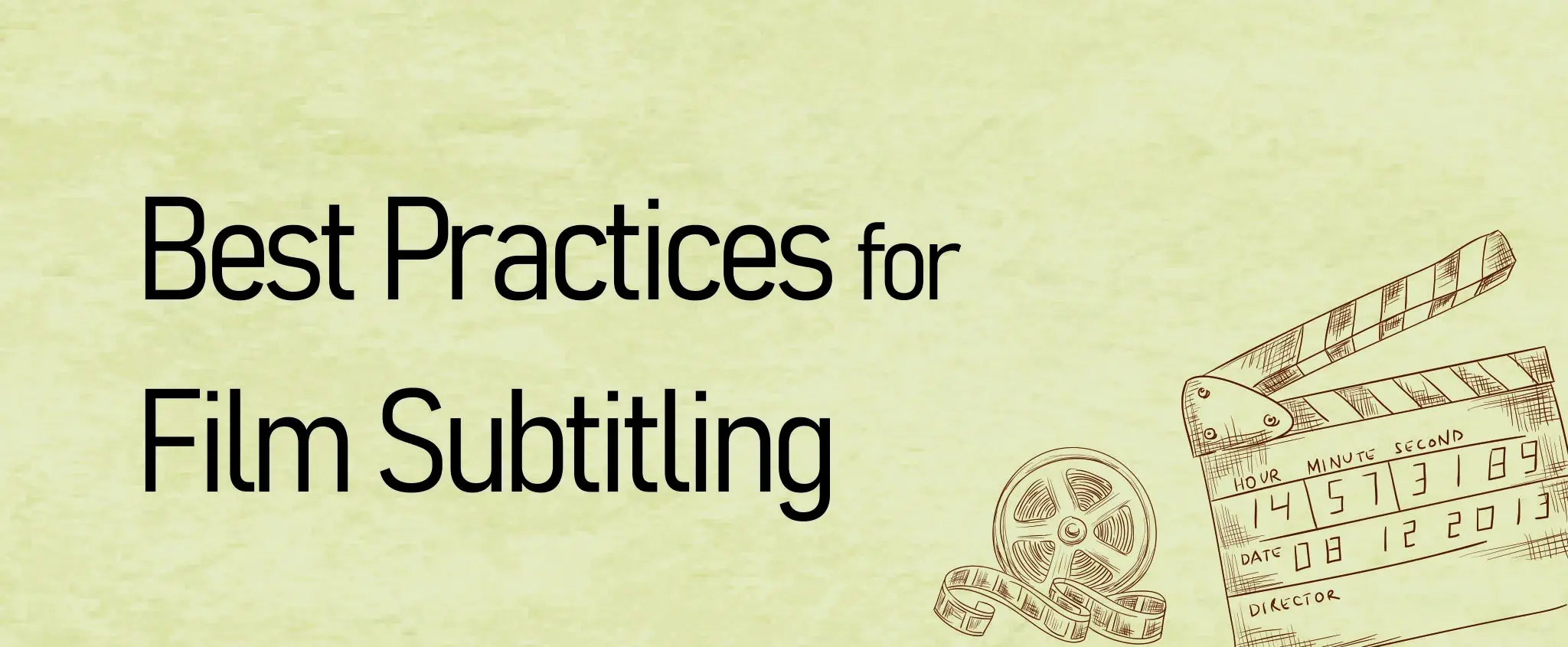Key Takeaways:
- Film subtitling expands global reach by translating films into other languages.
- Identify the differences between video closed captioning and film subtitling and know which services are better suited for you.
- Learn the basics of subtitling or contact film subtitling services.
Table of Contents:
- The Whys of Subtitling
- A Deep Dive Into the Subtitling Process
- Essential Tools and Techniques for Creating Effective Subtitles
- The Impact of Subtitling on Expanding Global Audiences
In recent years, the popularity of K-dramas and other Asian films and dramas has skyrocketed. This meant that their content had reached far beyond the borders of their own country. Because of this, global media consumers who do not understand the language also increased. Despite having no prior knowledge of the language, people are still eager to consume it. But why?
This is where film subtitling comes into play.
Subtitles have helped immensely in understanding foreign words and enjoying dramas virtually similar to native speakers. Translation and subtitling for non-English films have widened global media consumption. As such, it is much easier to peddle newly released films to audiences from anywhere, around the world.
So, what else should we know about subtitles? And, how does professional film subtitling help broaden the reach of film promotion?
The Whys of Subtitling
Many of us enjoy watching films and television shows. However, there are instances where the dialogues are muddled or incoherent. Sometimes, we rewind a specific scene to try and hear what they are saying. Other times, we rely on context clues or try to turn the volume up. But those just aren’t enough, are they?
Is it our fault we just can’t hear them well? No! In fact, most people have admitted to not hearing movie dialogues well. Most of the time it is the director’s conscious choice. Christopher Nolan, the director of Oppenheimer, Interstellar, and Tenet, is most infamous for this unorthodox idea.
In most known cases too, the actors are just mumbling their lines. The microphone captures the sound, but we do not recognize the words. It comes out almost like another language or drunken gibberish. Thick accents may make it hard to understand dialogues as well. Subtitles help clarify these words and make us “hear” by seeing what is being spoken.
But there are other reasons why subtitles are important. Here’s why:
- Aid the deaf and hard-of-hearing people: Subtitles are originally utilized to help the deaf or hard-of-hearing understand the film’s content. This makes any kind of media content accessible and inclusive without being an inconvenience.
- Improve language learning: For people learning languages outside their mother tongue, subtitles can help teach them many things. From culture to inflection to inside jokes, subtitles help make language learning so much easier.
- Expand global reach: With more and more people wanting to explore beyond local movies, subtitling helps reach out to them. Subtitling for non-English films has helped media consumers explore content beyond their lingua franca.
- Accessibility: Subtitles make it possible for people in public spaces to watch without disturbing anyone. Other times, people prefer to read rather than listen to understand. As such, the film is accessible with or without sound by using subtitles.
A Deep Dive Into the Subtitling Process
The subtitling process may seem as easy as transcribing and overlaying words onto the video. However, it is much more intricate than just that.
To start with, here is a peek into the film subtitling process:
Translation and Transcription
Transcription is the very first step in the subtitling process. The dialogues are transcribed into a Word file and sometimes proceed directly to the other steps. When it does, the transcribed script is utilized for closed caption or intralingual subtitling.
Intralingual subtitling refers to the transcription of a caption in the same language as the dialogue. It is often utilized to clarify muffled words or thick accents. However, in cases of film localization, transcription proceeds to another step, which is translation.
After that, the translated words are manually transcribed into any film subtitling software.
Spotting and Time-stamping
When defining the synchronization of the subtitles with the audio, spotting is used to determine its accuracy. Subtitles should neither appear too early nor should they stay on the frame for far too long.
Time stamping is the process of stamping specific time codes on each line. This is to know when a subtitle should appear and for how long.
Making Adjustments
During editing, the translated subtitles are continuously polished to fit the video. It may be about format, grammar, font color and styles, and the overall accuracy of the subtitles. It is also called ‘proofreading’ the video, filtering any typos or errors before simulation.
Simulation
After translating, spotting, and polishing the subtitles, it is given a run-through so editors may identify any errors. There may be grammatical errors or formatting issues that were overlooked during editing. As such, watching it in its entirety ensures that the subtitles are spotless before release.
Essential Tools and Techniques for Creating Effective Subtitles
If you’re an aspiring subtitler or someone who’s just looking to DIY their content, here are a few tools and techniques for effective subtitling.
Make sure your subtitles are readable at a glance.
- This includes making the subtitles large enough to be read. The font color should also contrast the video or, if not possible, use shadowing or bordering. When segmenting the lines, make sure there are only two lines in the video in a pyramid format, centered and low. Keep it compact at a maximum of 50 characters per line.
Pro-tip: Do not use bold or underline in subtitling font styles. Italics can be used to emphasize foreign words or concepts.
The subtitles should be in sync with the audio.
- It should only appear once a character starts speaking and may linger a bit afterward. Make sure that it does not linger for too long, though. The subtitles should be on screen for a minimum of one second and a maximum of seven seconds.
Pro-tip: Do not split syntactic units or proper nouns (names, places, etc.). If possible, keep them in one sentence or alter them to fit the audio.
Not everything should be subtitled.
- Some words may be repeated for comedic effect or already obvious in context. As such, there’s no need to put them into words. It also enhances the natural feel of the dialogue. Actions may sometimes be subtitled, especially those concerning sounds. Things like gasping, whispering, shuffling. These things may not be obvious to the viewer especially if they are hard of hearing.
Translated subtitles should be concise and culturally sensitive.
- In Parasite, director Bong Joon-ho and Darcy Paquet worked together to produce subtitles as closely as culturally possible. Some words were translated that remain true to the culture of the movie but are easily understood by non-Korean speakers.
The Impact of Subtitling on Expanding Global Audiences
However, if you think you can’t do film subtitling alone and are looking for film subtitling services or a suitable subtitling company, CCC offers transcription and translation services. They are well-versed in professional film subtitling if you’re looking to make your content accessible to a wider audience.
Whether it’s for video closed captioning or subtitling for non-English films, CCC has got you covered! Contact us here to see how we can help you reach your audience.





